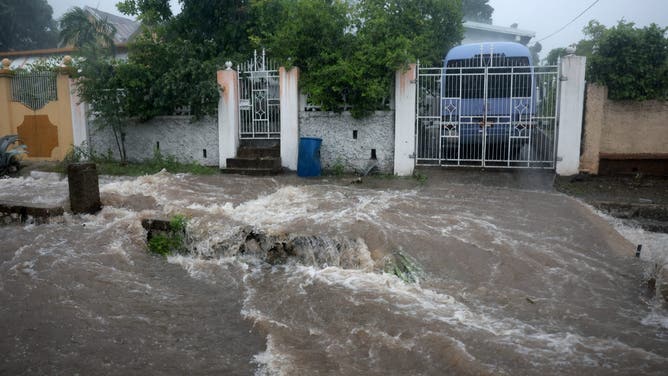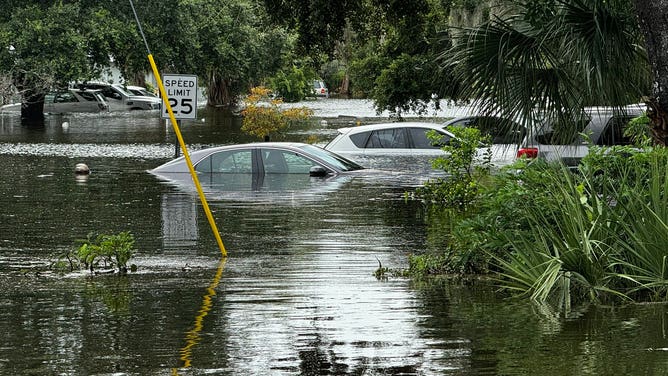NOAA updates hurricane forecast as peak of Atlantic season approaches
Already this season, the Atlantic basin has seen four named storms, including Hurricane Beryl which became the earliest category-5 storm on record in the Atlantic. NOAA's latest outlook drops the predicted number of named storms from up to 25 to 24, which includes the four named storms to date.
Colorado State lowers Atlantic hurricane season forecast
Forecasters at Colorado State University have lowered their 2024 Atlantic hurricane season forecast, but it's still expected to be an 'extremely busy' rest of the season.
MIAMI – Hot ocean temperatures continue to fuel an "extremely active" Atlantic hurricane season, according to NOAA’s latest outlook for the remainder of the 2024 season.
NOAA’s Climate Prediction Center updated its forecast Thursday as Tropical Storm Debby continued to lash the mid-Atlantic and Southeast after making a second U.S. landfall.
Before the start of the 2024 Atlantic hurricane season, the CPC's outlook called for between 17 and 25 named storms to form, with 8-13 becoming hurricanes with winds of at least 74 mph and 4-7 of those becoming major hurricanes with winds of at least 111 mph.
The latest outlook drops the number of named storms to between 17 and 24, including the four named storms so far this season. The rest of the forecast was unchanged.
A typical hurricane season in the Atlantic has 14 named storms, with seven becoming hurricanes. Based on ocean and atmospheric conditions, NOAA forecasters predict the 2024 Atlantic hurricane season has a 90% probability of being an above-normal season.
Already this season, the Atlantic basin has seen four named storms, including Hurricane Beryl, which became the earliest Category 5 storm on record in the Atlantic. Beryl made landfall in the Caribbean islands, causing at least 20 deaths before making a second landfall in Texas. The remnants of Beryl headed across the U.S. and into the Northeast, causing deadly flooding in Vermont.
HURRICANE BERYL LEAVES TRAIL OF DAMAGE, WIDESPREAD POWER OUTAGES IN GALVESTON

KINGSTON, JAMAICA - JULY 03: Flood waters pour onto the street as Hurricane Beryl passes through the area on July 03, 2024, in Kingston, Jamaica. Beryl has caused widespread damage in several island nations as it continues to cross the Caribbean. (Photo by Joe Raedle/Getty Images)
(Getty Images)
On Monday, Debby made landfall in Florida as a Category 1 hurricane before being downgraded to a tropical storm. It cut across the Sunshine State and stalled out over the Carolinas, causing flooding and tornado damage. After entering the Atlantic again, Debby made a second landfall Thursday in South Carolina, and its impact continues to be felt along the Interstate 95 corridor.

Hurricane Debby floods Sarasota, Florida.
(Omar Delgado FOX 13 / FOX Weather)
NOAA forecasters said they factored several influences into this year’s forecast, including warmer-than-average sea surface temperatures, an enhanced West African monsoon, reduced tropical Atlantic trade winds, and reduced vertical wind shear.
AUGUST IS THE SECOND BUSIEST MONTH OF THE HURRICANE SEASON
"Hurricane Beryl broke multiple long-standing records in the Atlantic basin, and we’re continuing to see the climatological hallmarks of an active season," NOAA’s Climate Prediction Center Lead Hurricane Season Forecaster Matthew Rosencrans said. "Sea surface temperatures remain abnormally high, and La Niña is still expected to emerge during the hurricane season, so the time to prepare is now."
Also this week, experts at Colorado State University slightly lowered their forecast number of named storms for the remainder of the 2024 Atlantic hurricane season. Still, the outlook calls for a busier-than-average season.
The official peak of the Atlantic hurricane season is Sept. 10, when there is most likely to be a named storm in the Atlantic. Hurricane season runs through Nov. 30.
